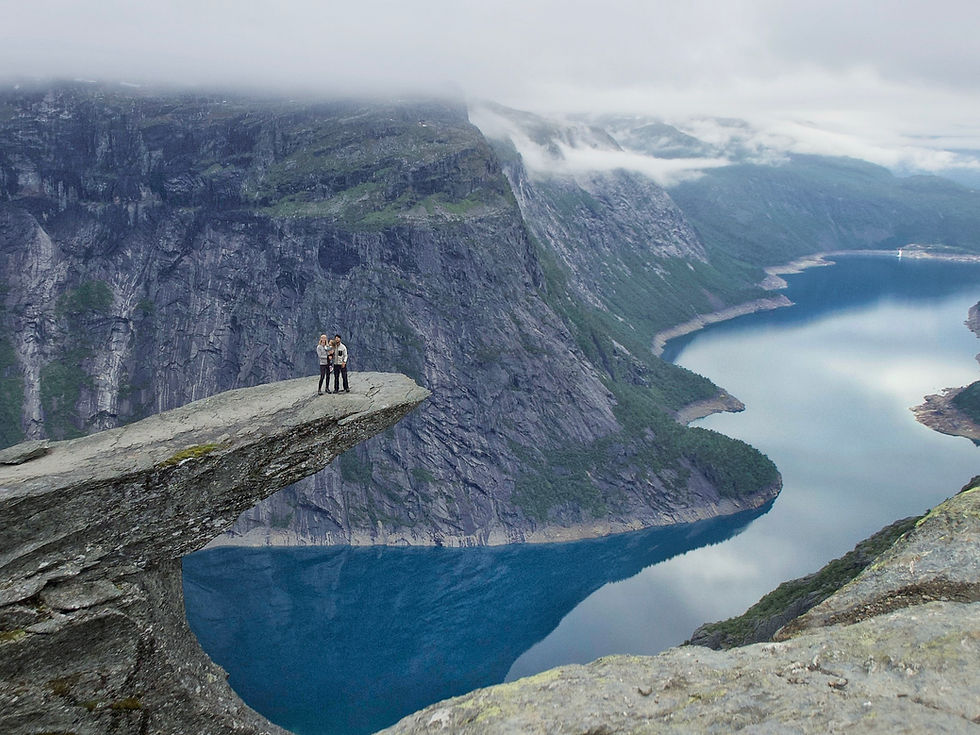Swedish Midsummer - What Is It and How Is It Celebrated?
- minna

- Jun 16
- 5 min read
Updated: Aug 19
You may have heard of Swedish Midsummer - maybe you've seen pictures of people wearing flower crowns or dancing around a maypole in colourful floral dresses, maybe you even have Swedish friends who have talked about how they celebrate. To the outsider, it might look like something from a hippie cult, but having grown up with this tradition, I can honestly say it is one of my favourite times to visit Sweden.

Although I no longer live in Sweden, we try and visit for Midsummer every year, especially since the birth of my now 2.5-year-old daughter. But what is this iconic Swedish holiday really about? Let's take a look at why Swedes celebrate Midsummer and how it is celebrated (and don't worry - it isn't like the horror movie Midsommar. At least not entirely...).
What is Midsummer?
Midsummer (or midsommar, as it’s called in Swedish) is one of the biggest holidays of the year in Sweden (right up there with Christmas). It celebrates the summer solstice, the longest day of the year, when the sun barely sets and the skies stay light late into the night. At its heart, Midsummer is a celebration of life, love and the beauty of the natural world. Families and friends gather in the countryside or by the coast to enjoy a day filled with traditional food, dancing, singing, and flower crowns. The centrepiece of the celebration is the maypole (or midsommarstång), a tall pole decorated with greenery and flowers, around which people of all ages dance to cheerful folk songs.

What Are the Origins of Midsummer?
Midsummer celebrations date back to ancient pagan times, when people across Northern Europe celebrated the summer solstice. In early agrarian societies, the solstice was deeply spiritual. People believed that nature was at its most potent, and rituals were performed to ensure fertile crops, healthy livestock, and prosperity. Fires were lit to ward off evil spirits, and flowers and herbs picked during this time were thought to have magical properties.
As Christianity spread, these Midsummer traditions blended with Christian celebrations of St. John the Baptist’s Day (24th June), but in Sweden, the holiday remained more nature-based and less religious.
When is Midsummer?
Midsummer is celebrated on the weekend closest to 24th June, so the exact date changes every year. The biggest day is not actually Midsummer's Day, but Midsummer's Eve (similarly to how Swedes celebrate Christmas Eve as opposed to Christmas Day), which always occurs on a Friday and is a public holiday in Sweden. Sometimes, there will be some events leading up to Midsummer, like dressing the maypole on the day before, and there are usually some events happening throughout the weekend as well. Something to note if you are planning to visit Sweden for Midsummer is that nearly everything closes so people can gather with family and friends. So if you are visiting one of the bigger cities hoping to do some city sightseeing, this is probably not the best time to go - but if you are happy to have a slower paced weekend and join in on the celebrations, then you're in for a treat!
Where Is Midsummer Celebrated?
The summer solstice is celebrated in many parts of Europe, particularly in the Nordics, however, the Midsummer tradition of dancing around the maypole is unique to Sweden (although other countries dance around the maypole on other occasions, usually for 1st May celebrations).
Midsummer is celebrated all across Sweden, but some regions are especially known for their lively, traditional, and picturesque celebrations. Here are the top places where Midsummer is most famously celebrated:
Dalarna - This is the most iconic region for Midsummer celebrations. Villages like Leksand and Rättvik host huge gatherings with traditional music, folk costumes, and beautifully decorated maypoles.
Stockholm & Gothenburg Archipelagoes - Many people from the 2 biggest cities escape to the nearby islands to celebrate in a more relaxed, nature-filled setting.

Gotland & Öland - These islands in the Baltic Sea are popular summer destinations and come alive during Midsummer. Öland, in particular, is a favourite for families, with lots of kid-friendly events.
Countryside cottages (anywhere!) - Midsummer is really about escaping to nature, so many Swedes head to their family summer houses, often near lakes or forests.
How Do You Celebrate Midsummer?
Celebrating Midsummer is all about connecting with nature and each other. Normally, friends and family get together on Midsummer's Eve and it's a day filled with food, song and flowers. The cities are quite empty as most people head out to the countryside and celebrate at someone's country home/lake cabin/house in the archipelago.
A big part of the day is food, and as with most Swedish holidays, it's a buffet-style spread of meatballs, pickled herring, seafood, potato salad and fresh strawberries with cream or ice cream for dessert. While you're eating, it is also tradition to drink snapps (Swedish hard liquor) with the obligatory preceding 'snappsvisor', traditional drinking songs that are sung before you can drink. After food (this is more a lunch thing than dinner), everyone usually goes to join the Midsummer dance around the maypole and, depending on where you are, you might end the day with an evening swim in the sea or lake.

Midsummer Traditions
Flower Crowns
Everyone (from tiny toddlers to grandparents) wears crowns made from flowers and greenery. Some people take this more seriously than others, buying expensive flowers at a flower shop, whilst others just pick wildflowers and branches from trees - I prefer the latter as there are usually so many wildflowers around this time of year, and I like the look of the slightly wilder, less perfect crowns (alternatively you can do a mix of both!). Hot tip: bring floral wire and string if you want yours to actually stay on!
7 Flowers Under the Pillow
This is one of my favourite Midsummer traditions. According to Swedish folklore, if you pick 7 different wildflowers and place them under your pillow on Midsummer’s Eve, you’ll dream of your future love. I would do this every summer as a child and then try to desperately remember my dreams the next day. Your toddler might not understand the concept of it, but it's a fun activity to do together - getting out in nature and letting your child find and pick out 7 different kinds of flowers to pick.

Traditional Dress
Some people wear traditional folk costumes for Midsummer. The dresses vary depending on where you are from (each county has a different design), but they are beautifully embroidered dresses with aprons for the women and trousers and a shirt and waistcoat for the men. This is more common further up north (particularly in the county of Dalarna), I myself have never worn one, even though the county where I'm from has its own design of folk dress. If you go to one of the bigger celebrations, you will probably see people wearing them.

Dancing Around the Maypole
This is hands-down our daughter’s favourite part! There are usually organised Midsummer celebrations on both Midsummer's Eve and Midsummer's Day (we usually celebrate out in the Gothenburg archipelago and on that island alone there are two different celebrations, so you'll find them all around the country). They range from big and small, but they all have a maypole and there is usually a band playing and stalls for food and drinks, as well as games and raffles. It's a fun event, but the dancing is the best part! The songs are silly and fun and everyone joins in (there’s one song where you dance around like frogs - my advice is to just go with it).

So that is basically a short summary of what Midsummer is all about - but to fully understand it, you'll have to visit Sweden and experience it for yourself!













Comments